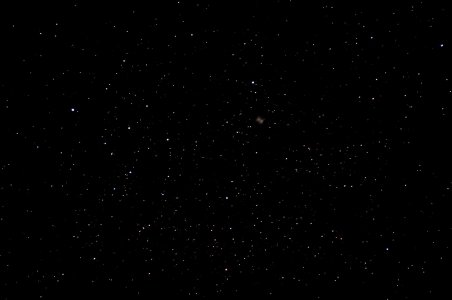Harry the K
Established
Hi all!
As the title suggests, I´m looking for a 50mm lens for astro, fitting on the Nikon F mount.
The Sigma 1.4/50 Art seems to be very good.
What about the Nikkor 1.8/50 AF-D, is it "good enough"?
What is your experience? Your favorite?
Cheers,
HtK
As the title suggests, I´m looking for a 50mm lens for astro, fitting on the Nikon F mount.
The Sigma 1.4/50 Art seems to be very good.
What about the Nikkor 1.8/50 AF-D, is it "good enough"?
What is your experience? Your favorite?
Cheers,
HtK
wlewisiii
Just another hotel clerk
Not something I've looked into for a use case, so I bopped over to DxcOMark:
That said, if manual focus is acceptable, the Nikkor 50/2 AI-S is exquisite in this regard as well.Small price, light weight… but this little 50mm is a very big surprise. This entry-level lens shows excellent performance—the best on a Nikon body among our four candidates. Not so bad for such an inexpensive lens! This is true for every full-frame sensor. But on an APS-C sensor, the Sigma 50mm F/1.4 EX DG HSM show higherresolution. Moreover, though the central resolution is good at f/2.8, closing to f/5.6 is necessary for better homogeneity. Otherwise the difference between the center and the edges will be noticeable. Distortion, vignetting, and chromatic aberrations are all handled very well.
In summary:
The Nikkor AF 50mm f/1.8D is best choice on a full-frame body: cheap, sharp, and reliable. On an APS-C body, the Sigma 50mm F/1.4 DG EX HSM is a better choice.
shawn
Mentor
Per lentips it looks like the 1.8/50 AF-D has a lot of coma which is a problem for astrophotography.
wlewisiii
Just another hotel clerk
One issue I forgot to include in my in my search criteria. Thank you.
Harry the K
Established
Coma and astigmatism are indeed the big problems of astrophotography. In most lens tests these flaws are hardly mentioned because they are not very relevant for daytime photography. While vignetting and distortion are unimportant for astro, they can be corrected in post easily.
Most lenses behave well in the image center while towards the borders many lenses are unuseable for astro.
Most lenses behave well in the image center while towards the borders many lenses are unuseable for astro.
pvdhaar
Peter
I've tried the 50/1.8 AF-D, but it is definitely not the best lens for astrophotography. As shawn already indicated, it's only acceptable in the center. And as it's only acceptable in the center, you'd be better served with a longer lens that has better characteristics throughout its field of view. Personal favorites for deep sky astrophotography are the Tamron 90mm/2.8, and the Nikon 300mm/4 (screwdriver AF version). Their low distortion makes them excellent choices for stacking multiple frames that require shift and rotate.
For wide field, I have a 20/2.8 AF-D and a 28/2.8 AIS. Haven't done rigorous testing between them, but my impression is that the 28/AIS is a better choice (maybe because it's manual and easier to focus on the rear LCD accurately).
Focusing tip for digital: focus using the rear LCD magnified as far as it will go. When pinpoints start to swim between RGB colors, you're spot on.
For wide field, I have a 20/2.8 AF-D and a 28/2.8 AIS. Haven't done rigorous testing between them, but my impression is that the 28/AIS is a better choice (maybe because it's manual and easier to focus on the rear LCD accurately).
Focusing tip for digital: focus using the rear LCD magnified as far as it will go. When pinpoints start to swim between RGB colors, you're spot on.
Harry the K
Established
For wide field I use the Tamron 2.8/15-30, a perfect lens for astro. My next step as a relative newbie in astro would be images of constellations, therefore the wish to buy a decent 50mm lens.
Myrrys.eu
Established
I would recommend 55mm micro nikkor, it's intensily sharp. And quite cheap. If money is no object, zeiss otus 55mm is amazing lens (but for normal lens, it's quite big and heavy). I still own micro nikkor and use it quite often. I used to own otus, but I sold it when I moved away from nikon dslr bodies.
css9450
Mentor
What are you trying to shoot, landscapes under a night sky, or the sky and stars in general?
I do a lot of night photography and I lean heavily towards wide angle lenses. Using a 50 would be cumbersome to me.
I do a lot of night photography and I lean heavily towards wide angle lenses. Using a 50 would be cumbersome to me.
Freakscene
Obscure member
Noct-Nikkor.
Harry the K
Established
The Noct Nikkor is a bit too long for my purpose--- and much too expensive for my wallet.
Noserider
Christiaan Phleger
I would consider the 58mm f 1.4 G, or if your budget requires, the 50 f 1.8 G. You'd need the body to use a G lens, but there are plenty about. Both of those have aspherical elements, which might help the coma at infinity.
Harry the K
Established
The way to proceed in astro for me is to grow from ultra wide and wide to longer lenses. Wide is the easiest, also beautiful, but restricted. My next step shall be 50mm.What are you trying to shoot, landscapes under a night sky, or the sky and stars in general?
I do a lot of night photography and I lean heavily towards wide angle lenses. Using a 50 would be cumbersome to me.
TenEleven
Well-known
I am not very knowledgeable about astro-photography. But if you are on a tripod anyway and can live with a lens that's a bit longer I would recommend the Micro-Nikkor 55/3.5 for the Nikon F mount. It's very very sharp and extremely well corrected - it's also easy on shoulders (not a heavy lens) and easy on the wallet.
It's aperture is not very ambitious, yea, but the level of correction and freedom of aberrations beats all other vintage 50ies in f-mount in my experience.
It's aperture is not very ambitious, yea, but the level of correction and freedom of aberrations beats all other vintage 50ies in f-mount in my experience.
raydm6
Yay! Cameras! 🙈🙉🙊┌( ಠ_ಠ)┘ [◉"]
FYI... @By-tor recently started a Deep Space, Astrophotography thread asking others to share their results. Some incredible images here:
 rangefinderforum.com
rangefinderforum.com
Deep Space, Astrophotography
If you shoot this type of photography post em... The Rosette Nebula (NGC2244) located in the constellation Monoceros, the Unicorn and is 5200 light years from Earth. This is 3 hours of data using my 420mm scope with 0.85 focal reducer making it 356mm and Optolong L-Enhance narrowband filter.
 rangefinderforum.com
rangefinderforum.com
pvdhaar
Peter
I just dug up an image that I shot with the 300mm/F4 (32 stacked frames of 1.5s). It gives an idea of what 300mm brings in terms of field of view, and why 300mm is already very short for deepsky (let alone a 50mm). Just a little above the middle and a little to the right, you can see the thumbbell nebula (it's small!)..


Harry the K
Established
Just to tell the outcome: I´ve bought the Sigma Art 1.4/50mm. The first pics are superb. But it´s so big and heavy, I would never use it as an allrounder 50mm.
The Micro Nikkors may be well corrected, but are too slow for astro.
Thank you for contributing!
Cheers,
HtK.
The Micro Nikkors may be well corrected, but are too slow for astro.
Thank you for contributing!
Cheers,
HtK.
Phil_F_NM
Camera hacker
Maybe too slow for astrophotography without an equatorial mount, but definitely enough once you have that rotation accounted for. Most decent telescopes are slower than f/5.6 and my reflector is slower than f/12 but makes some fantastic images. I think my best star fields were shot with a 180 ED probably about f/5.6 at a very low ISO to reduce noise. I have a few of the Perseids back in 2015 shot with a 50/1.2 AiS at f/2, on a D300, so the coma in the edges is pretty much gone.
Phil Forrest
Phil Forrest
Share:
-
This site uses cookies to help personalise content, tailor your experience and to keep you logged in if you register.
By continuing to use this site, you are consenting to our use of cookies.

